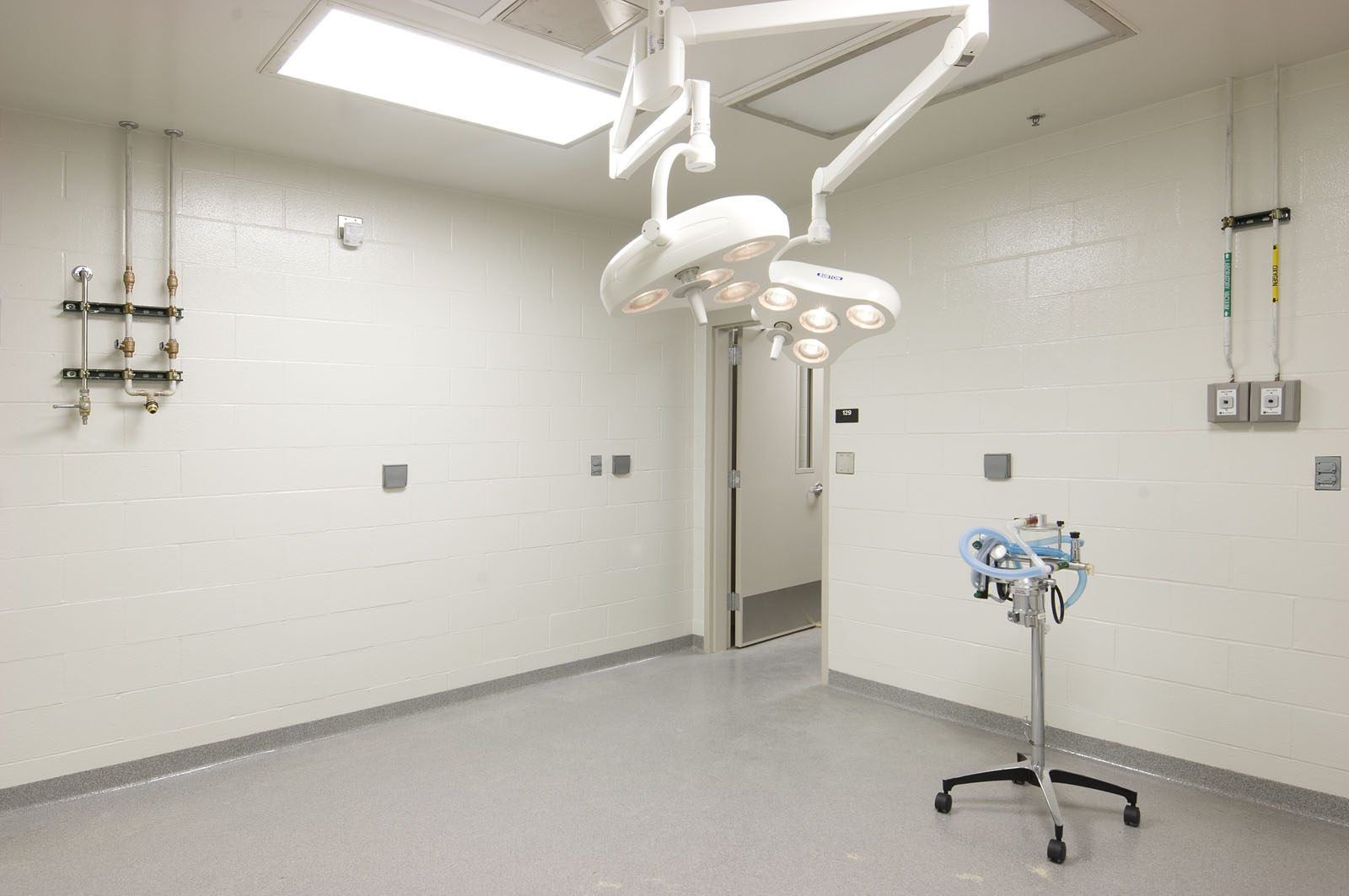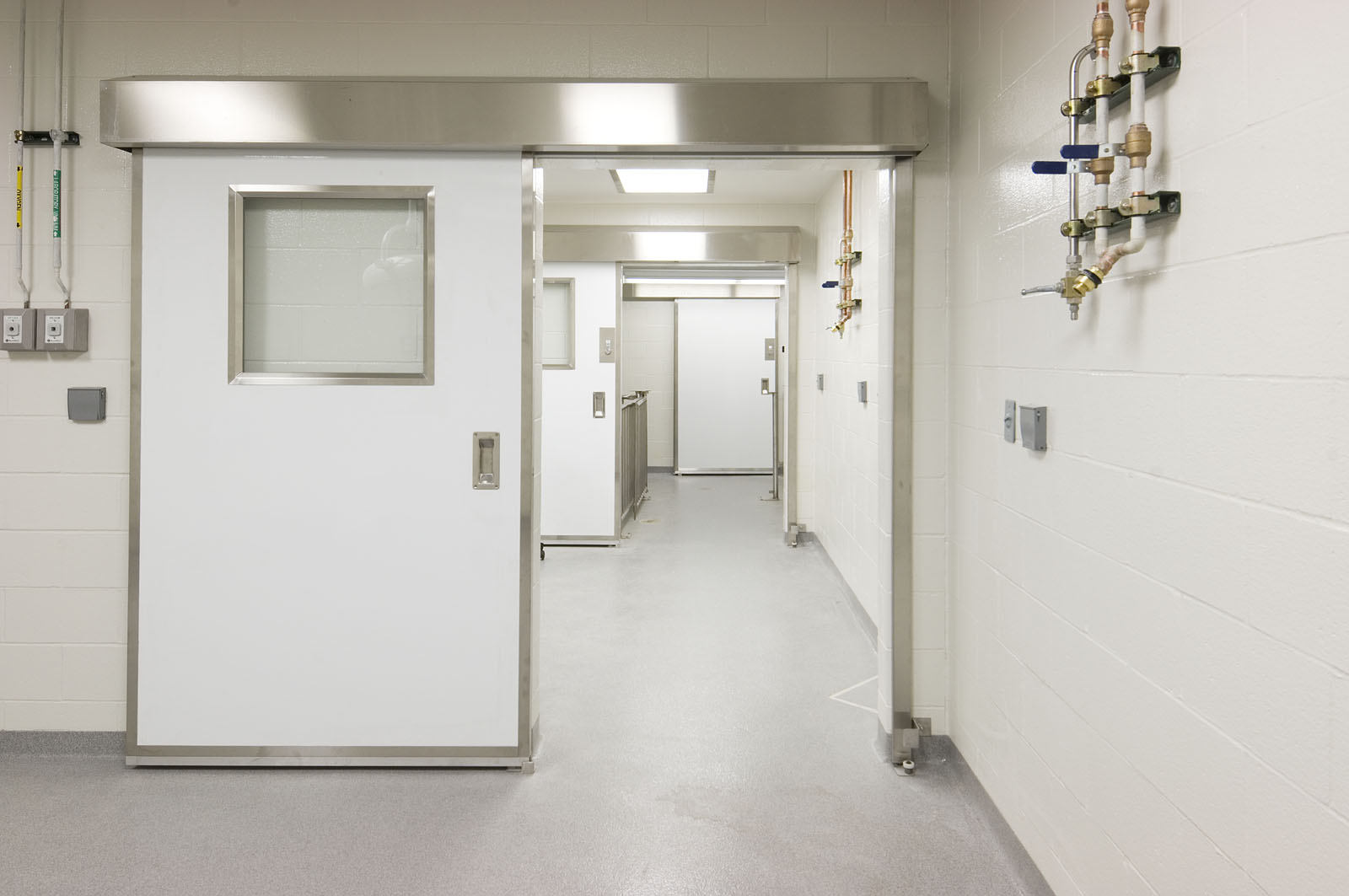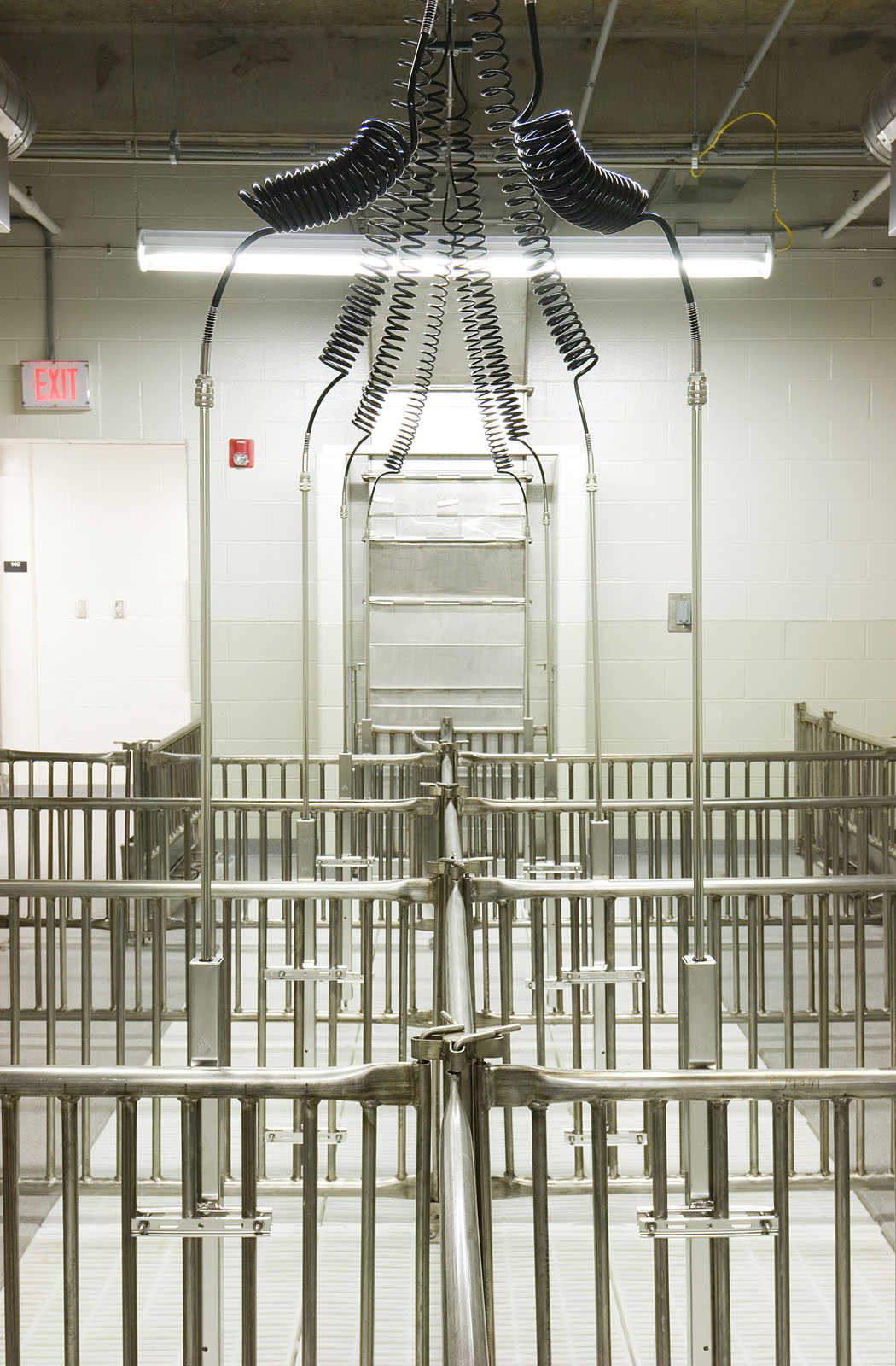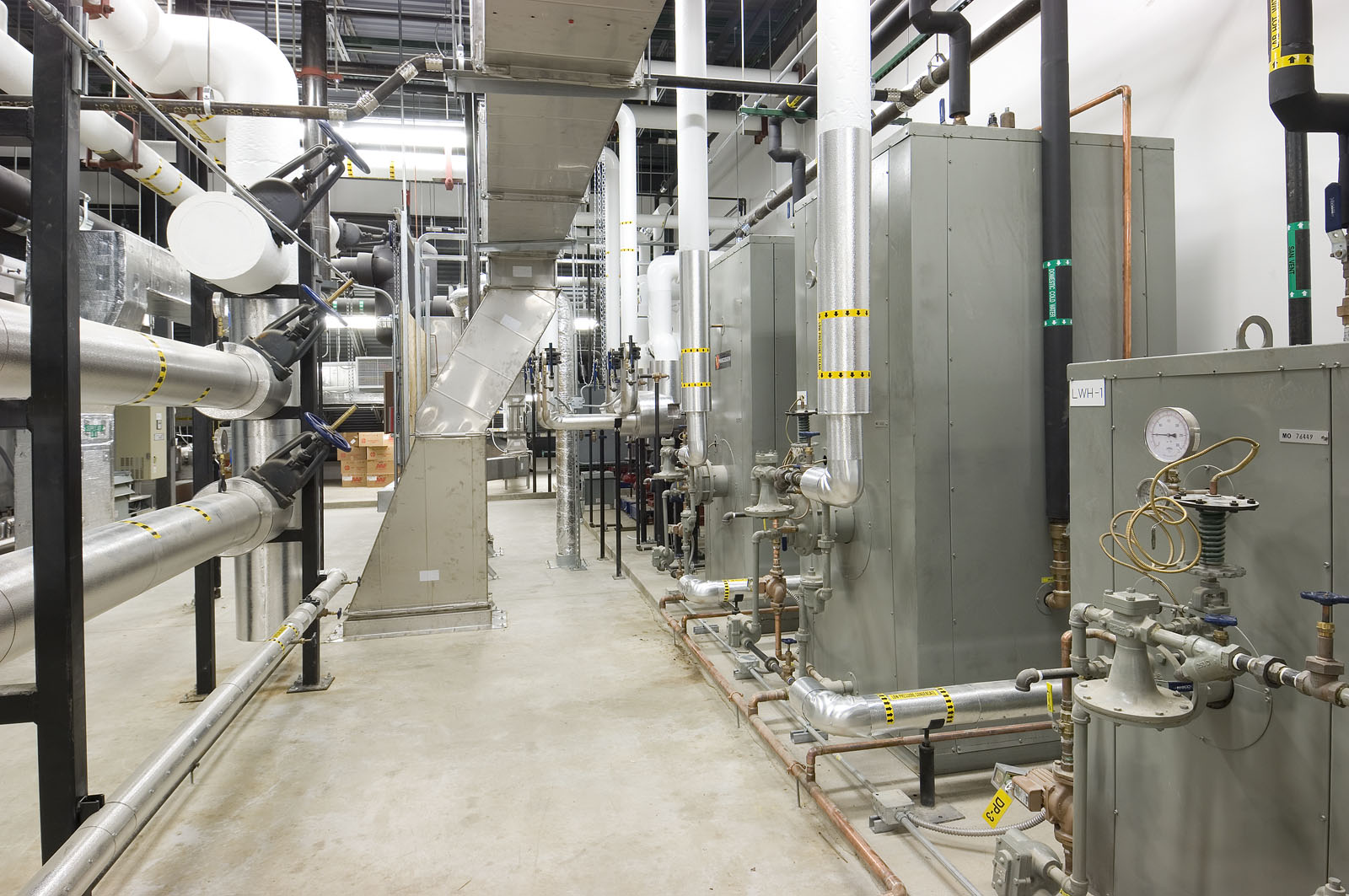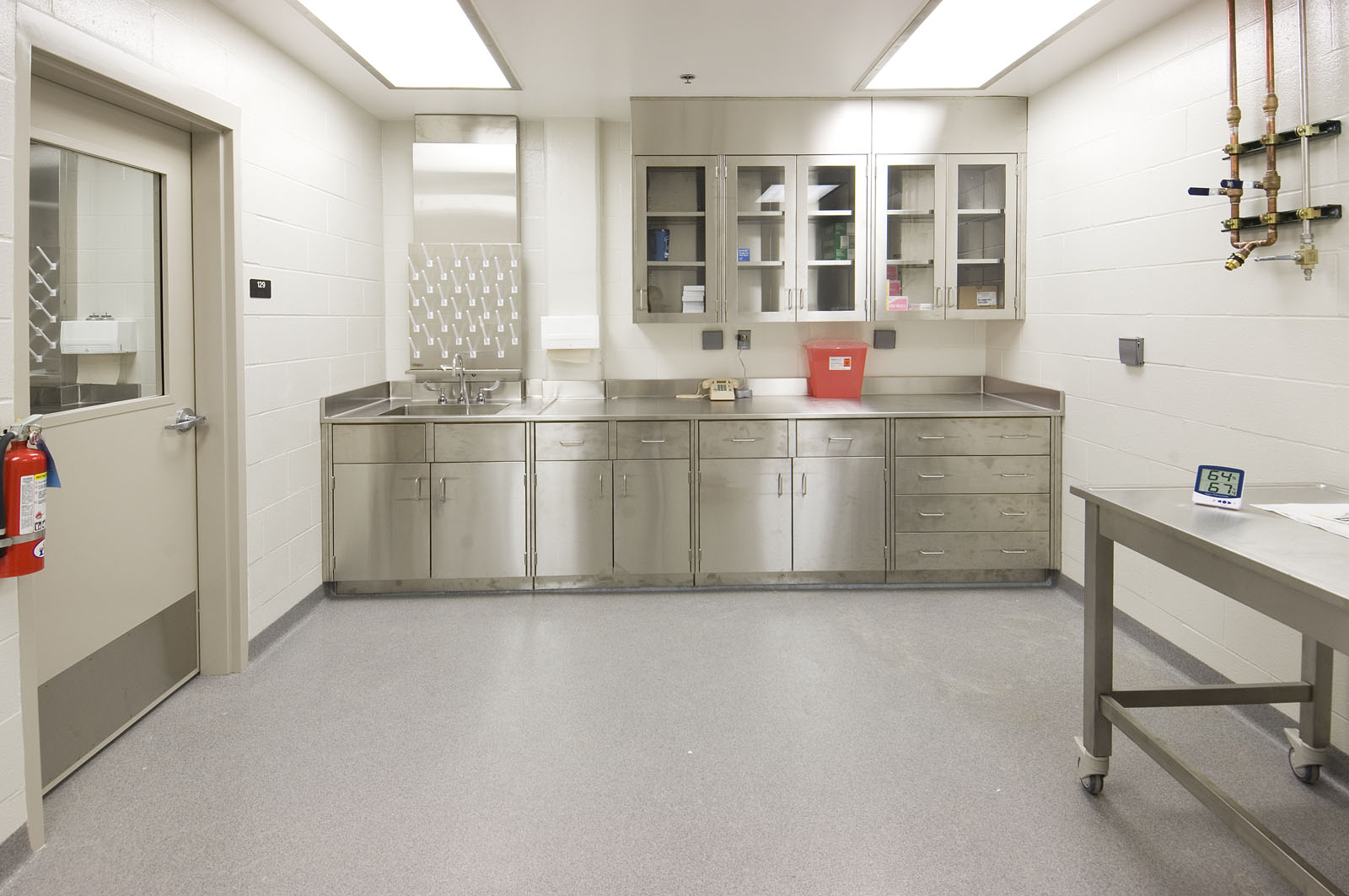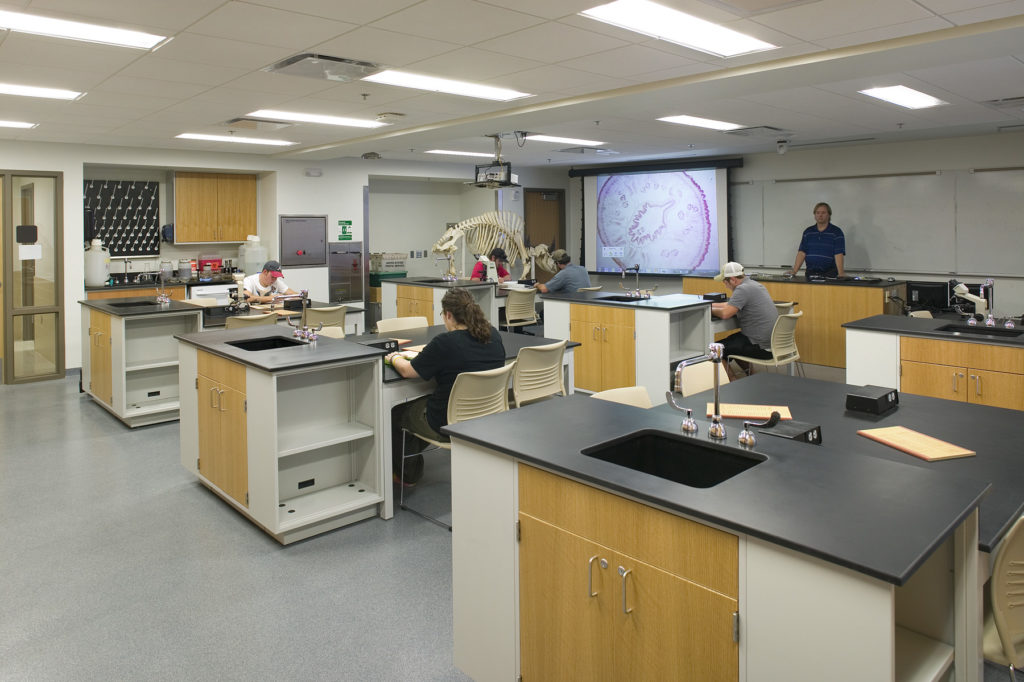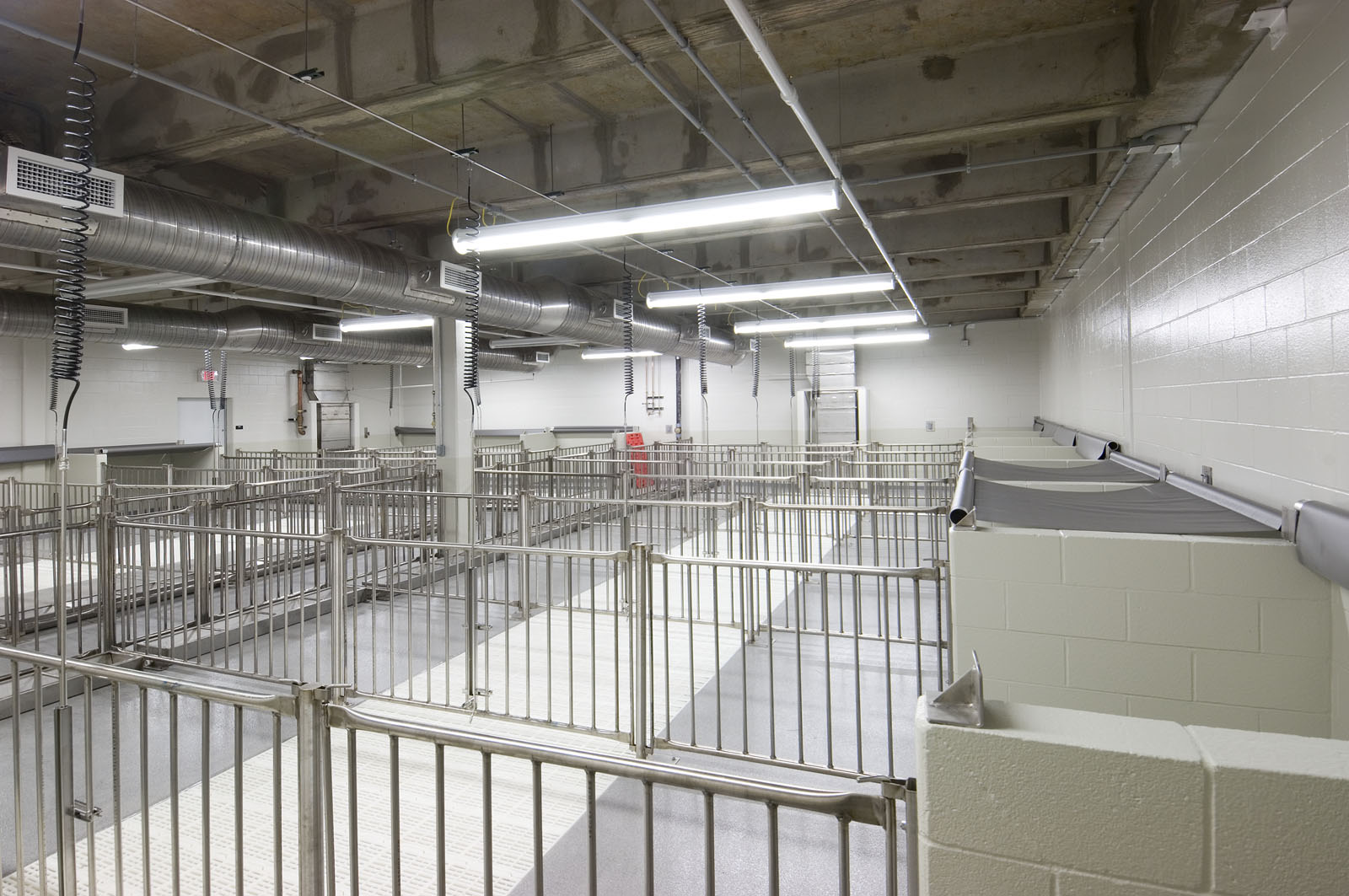
University of Missouri, National Swine Research and Resource Center
Completed in 2006, the National Swine Research and Resource Center at the University of Missouri, Columbia (MU), is a state-of-the-art laboratory and production facility dedicated to human disease research. Using cryogenically-preserved swine models, researchers study diseases as well as transgenic and knockout procedures to make an immediate, worldwide impact on human health. This project was funded, in part, by an NIH Special grant.
The building features several dedicated spaces, including a transgenic laboratory, cryo-biology lab, and various support areas. Properly-secured BSL-3 laboratory facilities prevent contaminants from leaving the building, while showers, a wipe down air lock, and a pass-through fumigation chamber allow humans, small packages and mail, and bulk feed and bedding to enter without introducing outside contaminants or pathogens. A segregated animal “out” area enables the transfer of transgenic swine.
Animal waste is handled using a series of shallow pits designed to limit odor propagation throughout the facility. A new on-site, standalone pretreatment facility captures a majority of the solid waste material prior to the connection to the City sanitary sewer system.
Capacity Expansion Study
Clark & Enersen also conducted a study for MU to look into the expansion of research swine housing and breeding operations, assessing the viability to provide extra capacity with additions to the National Swine Resource and Research Center or by building on new sites.
The study’s objective was to find multiple, cost-effective options for increasing animal holding capacity using a modular and compartmentalized approach. The design team outlined ways to expand capacity in stages when donations, grants, and other funding make construction possible.
Stats and Results
| Location | Columbia, Missouri |
| Square Feet | 19,550 |
| Grant Type | NIH Special |

